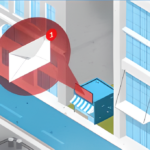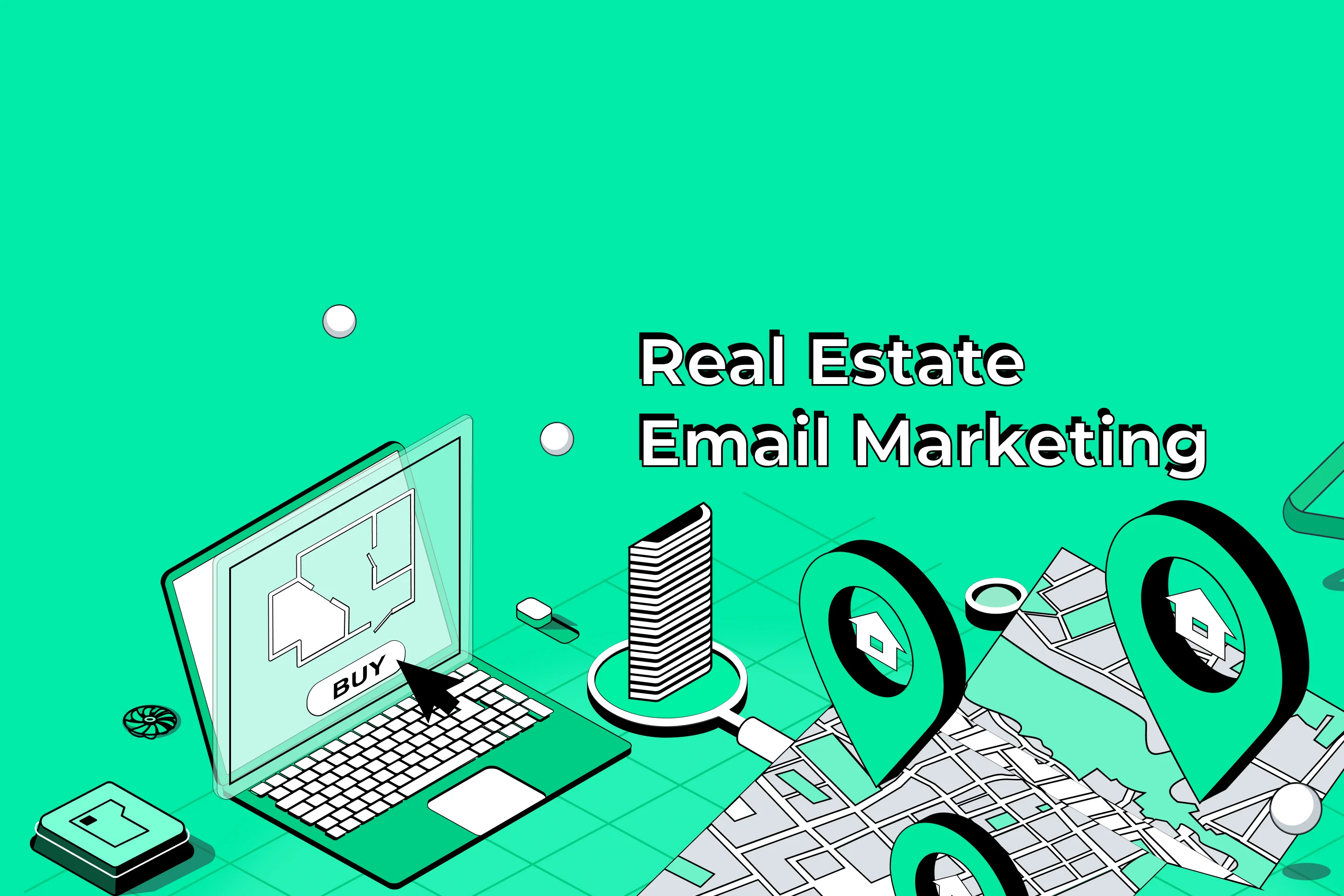3 B2B Email Marketing Tips: From Curation to Dissemination
According to a Smart Insights study, the top 3 sources of online traffic for B2B Email Marketing are:
- Organic searches
- Email marketing
- Social media
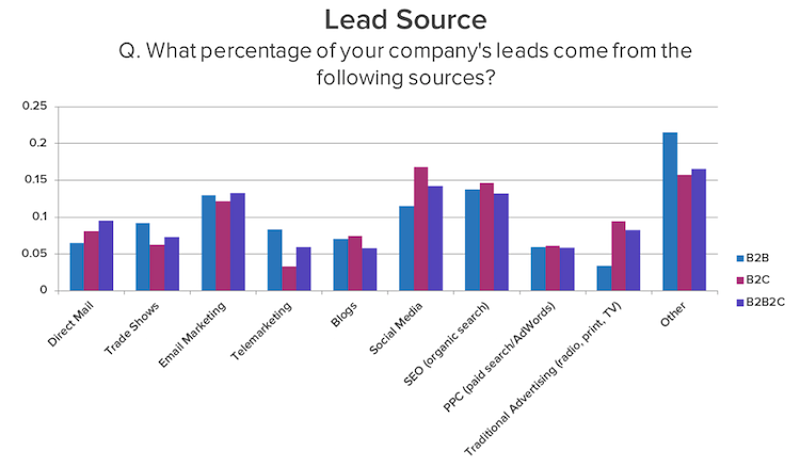 (Source: ventureharbour.com)While organic searches can get new clients in, email is still a key element in building brand identity, generating customer interest, and generating sales.You might think that there would be little difference between B2C and B2B email marketing tactics. At the end of the day, we are all attempting to make sales to people who require our products and services. But though our goals may be similar, the ways we achieve them are not the same.
(Source: ventureharbour.com)While organic searches can get new clients in, email is still a key element in building brand identity, generating customer interest, and generating sales.You might think that there would be little difference between B2C and B2B email marketing tactics. At the end of the day, we are all attempting to make sales to people who require our products and services. But though our goals may be similar, the ways we achieve them are not the same.
B2B Email Marketing Goals:
- As a B2B marketer, you not only require a nuanced understanding of your own industry and your clients? but the ability to communicate this in a clear, detailed, and professional manner. The people receiving your emails are not just ?anyone,? but high level executives, specialists, and CEOs.
- Whereas B2C marketing is often targeted to a wide audience (the average consumer), the client base for your B2B business is likely niche by comparison (mid- to high-level professional buyers within a specific sector). You have to find ways to target the influential decision makers within these groups.
- Purchasing processes for B2B sales are often complex and involve consultative sales approaches. The time between a client finding out about your product and making a purchase could range from a few days to a few months. Longer buying processes give your clients more time to research and respond to your competitors. Or, they give you the opportunity to develop your relationship with them, making them more likely to come to you.
- B2B sales are typically ?high ticket.? The buyers you deal with are still looking for value but they will be under additional pressure to make the right decisions on products likely to affect an entire team. Spending less money on a bad product and having their colleagues blame them for it could damage your buyer’s career more than going slightly over budget for a product that satisfies everyone affected.
This does not mean that B2B email marketing strategies are any more grueling than B2C. Each business model comes with its own set of challenges and opportunities. As a B2B business marketer, you simply require a different approach.Following a consistent strategy will provide you with the springboard you need to grow customer engagement. As you gather reliable data to better understand how to maximize the effectiveness of your campaigns, you will be able to tailor your tactics to even better meet the demands of your markets. In this post, discover what you need to get supreme results from your B2B Email Marketing. Follow our client-centric campaign strategy to develop a better connection with the businesses and buyers you communicate with. Sign up or log in to your DirectIQ account to implement your new campaign today. Increase brand presence, engagement, and consequently, profits.
1. Communicate Content, Not Advertising
 (Source: stock.adobe.com)In the physical world, we return to retailers because we get advanced knowledge from them on how to best use their products and services. Sometimes we go back simply because we like communicating with the staff and learning from their expertise.Digital marketing is no different.Clients and customers will come to you over your competitors if they believe you are a valuable source of additional content and support.In the B2B sector, it is especially important to forge strong, communicative relationships with clients. With longer purchase cycles and higher costs involved, you need to be there ?waiting in the wings? for when they need to purchase. Become a consistent source of additional support in your buyers? lives, so when they do need your help, in the form of products, they will come to you.Product-focused communication (in the form of ads) is relevant to buyers only at the time their business creates a need to purchase. Budgets may only allow for a single, high cost, annual spend on solutions for any particular department or need.Promoting your products to businesses with the hope that they might need them at the time they receive your email is unlikely to generate an enormous number of leads. Unless to ?get some new office chairs? is on your buyer’s ?To Do? list, it is unlikely they will impulsively spend company money on hundreds of new chairs for their department because of a slick, promotional email.You need to provide your clients with information relevant to the specific context of their professional responsibilities. Build a trustworthy and authoritative brand presence with great content that says you are the go-to company for everything related to your field. A knowledge hub is more valuable to businesses long-term than a company who keeps sending solutions to the same product-specific issues.Communicating great content is one of the most effective ways to build communicative relationships that make you indispensable to your clients. Reports show that 47% of B2B buyers consume 3-5 pieces of content prior to engaging with a salesperson. Showing you are a leader in your industry could greatly increase the number of prospective businesses willing to entertain your sales pitch or ad.Complex and consultative B2B buying processes mean client relationships need to be continually nurtured to create the best conditions under which to leverage a sale. Around 88% of B2B marketers had a content marketing strategy in 2017, showing its significance in the contemporary marketing space. Content is a critical stream of engagement because it can enable you to build relationships with your target audience before their business even needs to make a purchase.What content can you give your clients to add value to their experience of your brand?Many marketers hail blogging as the ideal medium for content. A HubSpot survey conducted at the end of 2016 showed blogging as the highest performing content marketing tactic.52% of B2B marketers believed blogs would be the most critical format for success in 2017; a year later, the majority of marketers surveyed report their content marketing as more effective.
(Source: stock.adobe.com)In the physical world, we return to retailers because we get advanced knowledge from them on how to best use their products and services. Sometimes we go back simply because we like communicating with the staff and learning from their expertise.Digital marketing is no different.Clients and customers will come to you over your competitors if they believe you are a valuable source of additional content and support.In the B2B sector, it is especially important to forge strong, communicative relationships with clients. With longer purchase cycles and higher costs involved, you need to be there ?waiting in the wings? for when they need to purchase. Become a consistent source of additional support in your buyers? lives, so when they do need your help, in the form of products, they will come to you.Product-focused communication (in the form of ads) is relevant to buyers only at the time their business creates a need to purchase. Budgets may only allow for a single, high cost, annual spend on solutions for any particular department or need.Promoting your products to businesses with the hope that they might need them at the time they receive your email is unlikely to generate an enormous number of leads. Unless to ?get some new office chairs? is on your buyer’s ?To Do? list, it is unlikely they will impulsively spend company money on hundreds of new chairs for their department because of a slick, promotional email.You need to provide your clients with information relevant to the specific context of their professional responsibilities. Build a trustworthy and authoritative brand presence with great content that says you are the go-to company for everything related to your field. A knowledge hub is more valuable to businesses long-term than a company who keeps sending solutions to the same product-specific issues.Communicating great content is one of the most effective ways to build communicative relationships that make you indispensable to your clients. Reports show that 47% of B2B buyers consume 3-5 pieces of content prior to engaging with a salesperson. Showing you are a leader in your industry could greatly increase the number of prospective businesses willing to entertain your sales pitch or ad.Complex and consultative B2B buying processes mean client relationships need to be continually nurtured to create the best conditions under which to leverage a sale. Around 88% of B2B marketers had a content marketing strategy in 2017, showing its significance in the contemporary marketing space. Content is a critical stream of engagement because it can enable you to build relationships with your target audience before their business even needs to make a purchase.What content can you give your clients to add value to their experience of your brand?Many marketers hail blogging as the ideal medium for content. A HubSpot survey conducted at the end of 2016 showed blogging as the highest performing content marketing tactic.52% of B2B marketers believed blogs would be the most critical format for success in 2017; a year later, the majority of marketers surveyed report their content marketing as more effective.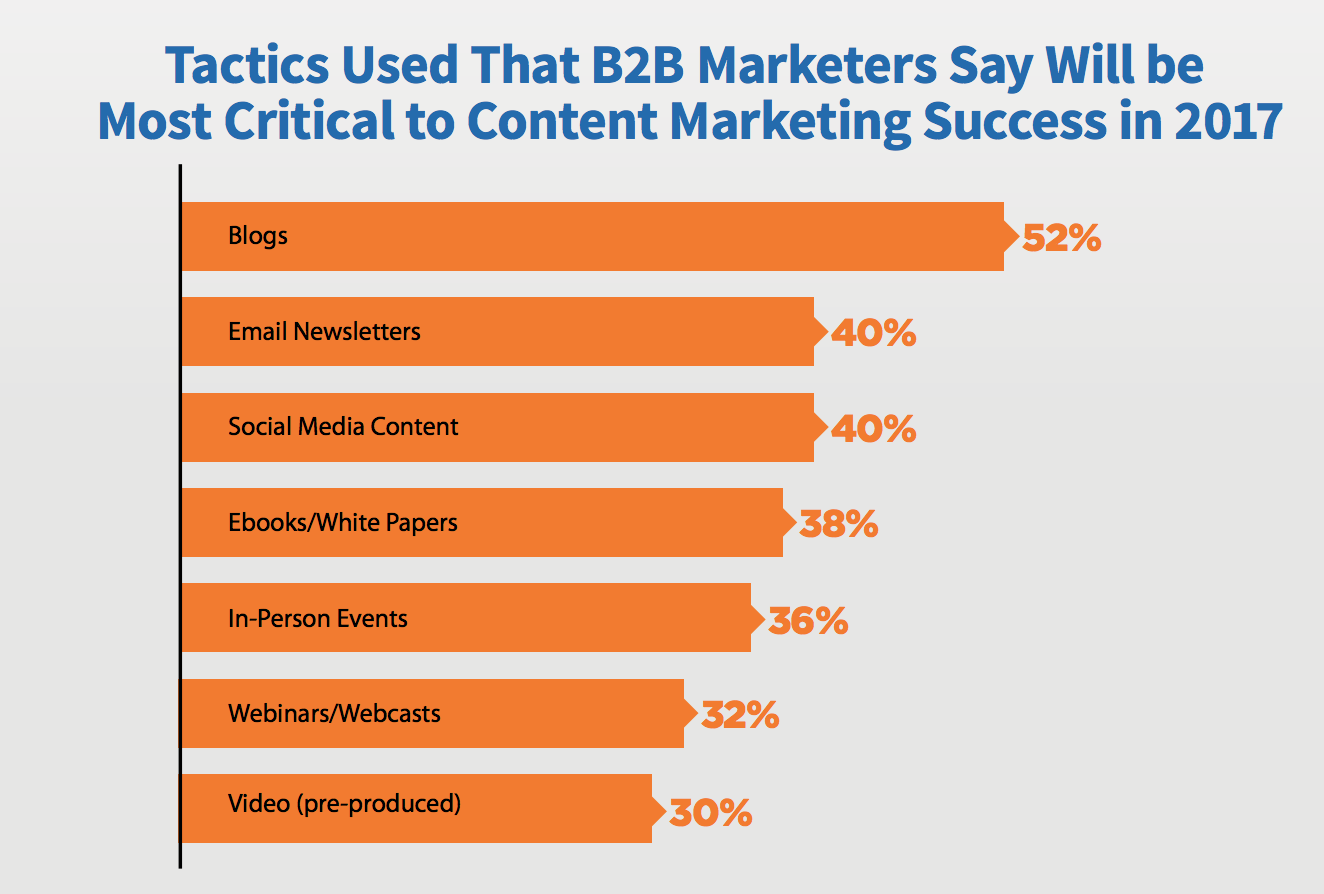 (Source: Content Marketing Institute)But it is not so much the format you shape your content into that counts?it is what you put into it, and what your customers get out. Depending on your products and industry, a blog may seem too informal for the identity you are seeking to develop. You might want to use your content strategy to seem traditionalist and formal in tone to clients, bolstering their impression of you as an authority in your sector.Blogging is a great format because it enables you to communicate digestible yet comprehensive information to your audience. The fact that blogs are producing good results tells us not that ?we should only blog? but that these qualities are characteristic of content that gets the traffic rolling in.Content for businesses should be digestible within the context for which it is intended. This means making it easy to read by using clear sentence structure, consistent terminology, and browsable sections and paragraphs. But it also means thinking about how your content will be taken in by buyers. Your content needs to be appropriate in tone and style for professional consumption but it also needs to create reasons to be read for work-related purposes. The more you can support your clients professionally, the more they will think of you when they need a product you can supply.How can you help people do their job better?Comprehensive content means covering all the bases. Your business clients consume content to find information and solutions to often very specific problems. But these issues are unlikely to concern your specific products and features every time. You need to target the wider processes buyers are involved in when their business is in a position to purchase. If you target the wider activities and responsibilities of your buyers, you can provide comprehensive shortcuts and solutions to diverse business obstacles.
(Source: Content Marketing Institute)But it is not so much the format you shape your content into that counts?it is what you put into it, and what your customers get out. Depending on your products and industry, a blog may seem too informal for the identity you are seeking to develop. You might want to use your content strategy to seem traditionalist and formal in tone to clients, bolstering their impression of you as an authority in your sector.Blogging is a great format because it enables you to communicate digestible yet comprehensive information to your audience. The fact that blogs are producing good results tells us not that ?we should only blog? but that these qualities are characteristic of content that gets the traffic rolling in.Content for businesses should be digestible within the context for which it is intended. This means making it easy to read by using clear sentence structure, consistent terminology, and browsable sections and paragraphs. But it also means thinking about how your content will be taken in by buyers. Your content needs to be appropriate in tone and style for professional consumption but it also needs to create reasons to be read for work-related purposes. The more you can support your clients professionally, the more they will think of you when they need a product you can supply.How can you help people do their job better?Comprehensive content means covering all the bases. Your business clients consume content to find information and solutions to often very specific problems. But these issues are unlikely to concern your specific products and features every time. You need to target the wider processes buyers are involved in when their business is in a position to purchase. If you target the wider activities and responsibilities of your buyers, you can provide comprehensive shortcuts and solutions to diverse business obstacles.
What Do B2B Customers Want to Know?
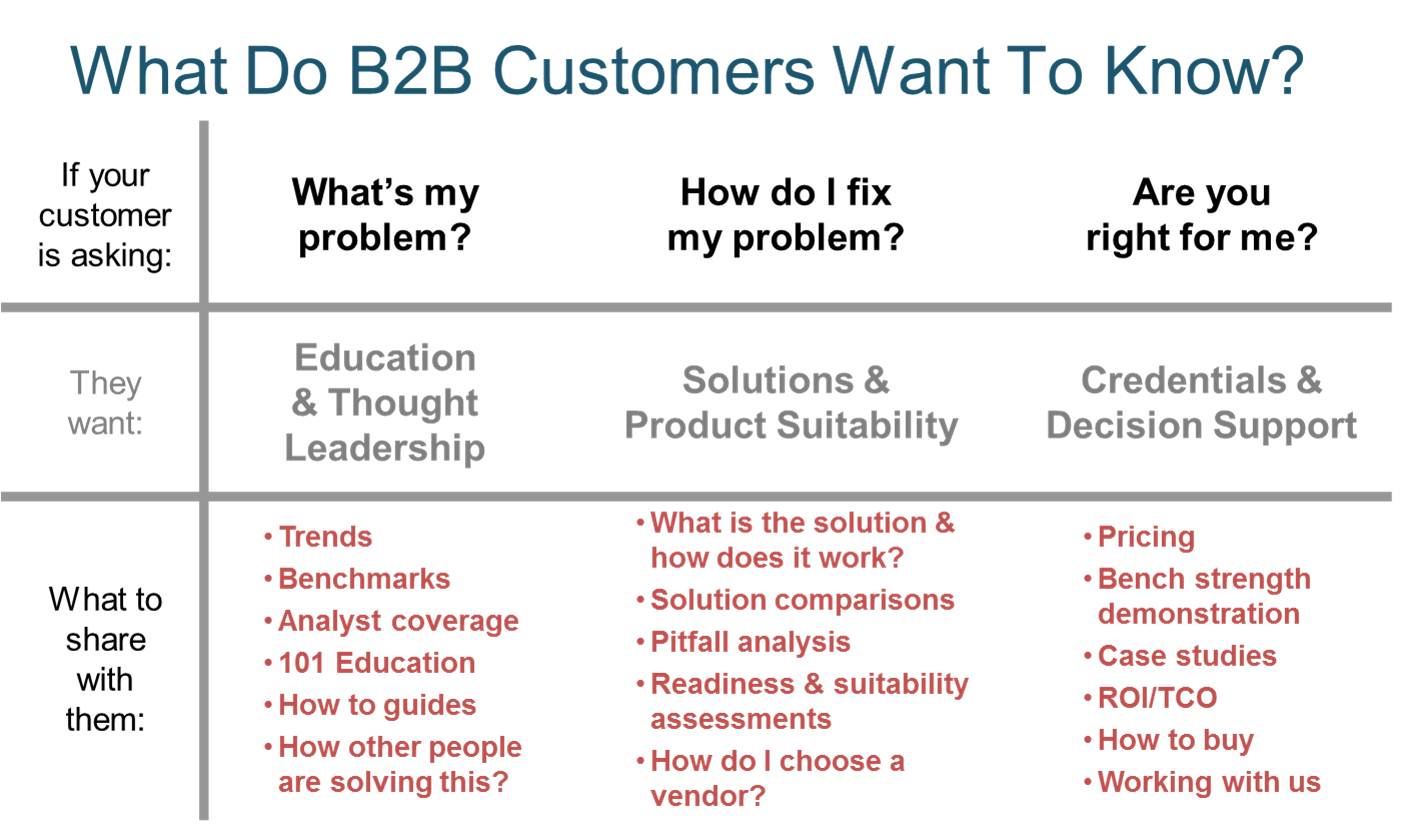 (Source: brainrider.com)Content for the hypothetical chair supplier mentioned earlier could range from titles such as The Art Of Zen: How To Rearrange An Office for Better Chi to Best Soundproofing Materials for Open Offices. Clients will not only think of your business as one that ‘sells chairs,? they will come to you because you have already proven your business to be an authoritative resource for all things ?office.? They have been given solutions to one office problem by your company already. Why would they not come back to you for the next?Content is no filler or thriller?curate quality content for your buyers to become a source of relief and support. Give them more than a sales pitch. Give them solutions. They will be more likely to become regular readers of your emails when they see you have something to give.
(Source: brainrider.com)Content for the hypothetical chair supplier mentioned earlier could range from titles such as The Art Of Zen: How To Rearrange An Office for Better Chi to Best Soundproofing Materials for Open Offices. Clients will not only think of your business as one that ‘sells chairs,? they will come to you because you have already proven your business to be an authoritative resource for all things ?office.? They have been given solutions to one office problem by your company already. Why would they not come back to you for the next?Content is no filler or thriller?curate quality content for your buyers to become a source of relief and support. Give them more than a sales pitch. Give them solutions. They will be more likely to become regular readers of your emails when they see you have something to give.
2. Target Teams Not Bosses (And Segment By What You Know)
 (Source: stock.adobe.com)In an increasingly democratic era, decisions are less likely to be made by high-powered individuals than by a decision-making unit (DMU). DMUs are comprised of key individuals who contribute to the company decision-making process. Thinking of your prospective clients in terms of DMUs better reflects the nuances of the procedures associated with high-pressured and ?high ticket? B2B sales.Curating and sending relevant content to your recipients will only improve your results if your emails get read. Sending quality content to a CEO is unlikely to generate the traction you need to get the company decision ball rolling. On average, only 24.7% of emails were read in 2017. Not only are company CEOs busy, so is everybody involved in making key decisions on whether to purchase your products. Cast your net wide to get the best chance of hitting the most DMU contributors.Target each member of your DMUs with relevant, curated content. Even if a single person makes the final decision on your products, the excitement generated from sending quality content to key people in any prospective company may give you a competitive edge.Reaching out to more members of company DMUs can greatly increase your chances of getting through. But drafting individual emails to each person you want to touch base with would be a waste of time and resources. Neither should you be sending the same email to all DMU members. The diverse roles people can play in business mean you need to target their particular concerns with regard to any decision made.Segmenting your mailing list into smaller groups enables you to filter relevant content through to each member of your client DMUs. Segmentation has been shown to yield an increase in sales of up to 760%. Tailoring your emails to better reflect the teams of people who buy your products could get you a nice boost in profits.It is not just important that you split your list though. You need to do it right. Take time thinking about how best to divide your customers to represent the roles they play in company decisions. You will see little benefit from segmenting according to characteristics used by B2C marketers, such as eye color or gender. These are irrelevant to the concerns of the people reading your emails (and could potentially come off as discriminatory). Segment your emails for business contexts, for professional people.It is unlikely you have much data on members of the DMUs you will be sending your emails to. You may only know the names, job roles, and titles of your recipients. But to tailor your content to key decision makers within a company you need to know very little.Understanding what individuals? primary concerns are for any professional decision that they have to make, takes knowing what they do every day. Job titles are the most valuable data you have because they tell you a lot about the activities and priorities of your contacts.You will need to establish a standardized set of around 3-5 job categories within which different members of the DMUs for prospective companies can be grouped.Here are some examples of job role categories you can segment your mailing list by for B2B email marketing:
(Source: stock.adobe.com)In an increasingly democratic era, decisions are less likely to be made by high-powered individuals than by a decision-making unit (DMU). DMUs are comprised of key individuals who contribute to the company decision-making process. Thinking of your prospective clients in terms of DMUs better reflects the nuances of the procedures associated with high-pressured and ?high ticket? B2B sales.Curating and sending relevant content to your recipients will only improve your results if your emails get read. Sending quality content to a CEO is unlikely to generate the traction you need to get the company decision ball rolling. On average, only 24.7% of emails were read in 2017. Not only are company CEOs busy, so is everybody involved in making key decisions on whether to purchase your products. Cast your net wide to get the best chance of hitting the most DMU contributors.Target each member of your DMUs with relevant, curated content. Even if a single person makes the final decision on your products, the excitement generated from sending quality content to key people in any prospective company may give you a competitive edge.Reaching out to more members of company DMUs can greatly increase your chances of getting through. But drafting individual emails to each person you want to touch base with would be a waste of time and resources. Neither should you be sending the same email to all DMU members. The diverse roles people can play in business mean you need to target their particular concerns with regard to any decision made.Segmenting your mailing list into smaller groups enables you to filter relevant content through to each member of your client DMUs. Segmentation has been shown to yield an increase in sales of up to 760%. Tailoring your emails to better reflect the teams of people who buy your products could get you a nice boost in profits.It is not just important that you split your list though. You need to do it right. Take time thinking about how best to divide your customers to represent the roles they play in company decisions. You will see little benefit from segmenting according to characteristics used by B2C marketers, such as eye color or gender. These are irrelevant to the concerns of the people reading your emails (and could potentially come off as discriminatory). Segment your emails for business contexts, for professional people.It is unlikely you have much data on members of the DMUs you will be sending your emails to. You may only know the names, job roles, and titles of your recipients. But to tailor your content to key decision makers within a company you need to know very little.Understanding what individuals? primary concerns are for any professional decision that they have to make, takes knowing what they do every day. Job titles are the most valuable data you have because they tell you a lot about the activities and priorities of your contacts.You will need to establish a standardized set of around 3-5 job categories within which different members of the DMUs for prospective companies can be grouped.Here are some examples of job role categories you can segment your mailing list by for B2B email marketing:
- Budget-oriented job roles include: accountant; chief finance officer (CFO).
- Growth-oriented job roles include: chief executive officer (CEO); operations manager.
- Workforce-oriented job roles include: supervisor; office manager; human relations manager.
- Customer-oriented job roles include: account manager; customer service manager.
 (Source: stock.adobe.com)Sorting your contacts into more manageable bitesize groups, means you do not have curate content that provides everyone solutions at the same time. To the budget-oriented segment of your mailing list, you could send content with specific advice on how to cut budgets and optimize them in ways that your products can facilitate. To the workforce-oriented recipients, you could send actionable information on ways to increase a workforce’s happiness and productivity, noting your product as a tool.And remember, the content you curate should target the wider processes DMU members are involved in. What information can you give these key people to improve their working life?Imagine this?the DMU within a company that could benefit from some new office chairs is comprised of three people: the accountant, the CEO, and the office manager.You could send all three of them the same product-focused ads in an attempt to pique their interest. Again, you are unlikely to get the engagement you need.Instead?you send the office manager content on Rearranging The Office; you send the accountant a Guide to Maximizing Profits (which includes a section on how ergonomic chairs can yield a 200% increase in productivity for workers); you send the CEO 10 Tips For A More Productive Workforce (including statistics on the productivity returns you could achieve by providing a more comfortable workspace for your staff).Because you accurately target all three key DMU members, each develops a positive impression of your brand for reasons that relate to their own concerns. By targeting efficiently, you tap into the power of self-interest and self-motivation. You have a higher chance of them all sitting down in a meeting and sounding out a unanimous ?yes? because each is aware of the tangible benefits they could reap for their role.But there is no need to stop segmenting at a singular characteristic. The more you segment, the more accurately you will be able to target different groups, for different purposes. You and your team will always be the best resources you have, for any further segmentation you implement. It may be that you have systems already in place by which you sort your list of contacts into categories for other purposes. If so, ensure these segments meet the criterion of pinpointing more targeted selections of your audience, so you can send relevant content accordingly.The best decision that can be made when optimizing your B2B email marketing offering is to ?go all in.? A study by The Direct Marketing Association found that segmented and personalized emails generate up to 58% of all email revenue. Peppering your targeted emails with personalized elements such as names and job roles only increases their relevance to recipients by making each message unique.To target individual members of the decision-making process in a more personalized way, you explore how these elements can work for you. Read this post to discover how you could use personalization to improve your campaigns.
(Source: stock.adobe.com)Sorting your contacts into more manageable bitesize groups, means you do not have curate content that provides everyone solutions at the same time. To the budget-oriented segment of your mailing list, you could send content with specific advice on how to cut budgets and optimize them in ways that your products can facilitate. To the workforce-oriented recipients, you could send actionable information on ways to increase a workforce’s happiness and productivity, noting your product as a tool.And remember, the content you curate should target the wider processes DMU members are involved in. What information can you give these key people to improve their working life?Imagine this?the DMU within a company that could benefit from some new office chairs is comprised of three people: the accountant, the CEO, and the office manager.You could send all three of them the same product-focused ads in an attempt to pique their interest. Again, you are unlikely to get the engagement you need.Instead?you send the office manager content on Rearranging The Office; you send the accountant a Guide to Maximizing Profits (which includes a section on how ergonomic chairs can yield a 200% increase in productivity for workers); you send the CEO 10 Tips For A More Productive Workforce (including statistics on the productivity returns you could achieve by providing a more comfortable workspace for your staff).Because you accurately target all three key DMU members, each develops a positive impression of your brand for reasons that relate to their own concerns. By targeting efficiently, you tap into the power of self-interest and self-motivation. You have a higher chance of them all sitting down in a meeting and sounding out a unanimous ?yes? because each is aware of the tangible benefits they could reap for their role.But there is no need to stop segmenting at a singular characteristic. The more you segment, the more accurately you will be able to target different groups, for different purposes. You and your team will always be the best resources you have, for any further segmentation you implement. It may be that you have systems already in place by which you sort your list of contacts into categories for other purposes. If so, ensure these segments meet the criterion of pinpointing more targeted selections of your audience, so you can send relevant content accordingly.The best decision that can be made when optimizing your B2B email marketing offering is to ?go all in.? A study by The Direct Marketing Association found that segmented and personalized emails generate up to 58% of all email revenue. Peppering your targeted emails with personalized elements such as names and job roles only increases their relevance to recipients by making each message unique.To target individual members of the decision-making process in a more personalized way, you explore how these elements can work for you. Read this post to discover how you could use personalization to improve your campaigns.
3. Template and Disseminate
 (Source: stock.adobe.com)If your team has been unable to keep up with sending frequent emails in the past, you may have failed to establish an optimum workflow with regular deadlines to keep you on track. A commitment to sending more emails is like saying you will ?eat healthier next week.? Without specific and measurable goals and plans to achieve them, there is no urgency or necessity to keep you motivated and organized on your path to success.The biggest challenge to marketers in 2016 was reported as a ?lack of strategy.? Failing to establish a strategic plan and standard operating procedures (SOPs) for disseminating content, means more focus on getting ‘something? sent, with less time and effort left over to curate the best content to target your customers.With tools such as DirectIQ, you can tweak prefabricated email designs to create templates you can use time and again. Once you have a template saved, you need only insert your curated content, make a few edits to the email copy, and hit send. It should take around 5 minutes to select content from your curated collection and drop it into your template for each segment you need to contact.Reusing email templates not only saves you time and streamlines your workflow. It also helps to develop a consistent brand aesthetic without putting the design work in every time. If each regular email from your company has a similar format, your clients will come to know what to expect and where to find the information they need on the screen. The expectation of a familiar framework that they can easily navigate will make recipients more likely to open your mail and take a look at what’s inside.As you develop your template into a framework for your regular content offering to clients, keep the following in mind:
(Source: stock.adobe.com)If your team has been unable to keep up with sending frequent emails in the past, you may have failed to establish an optimum workflow with regular deadlines to keep you on track. A commitment to sending more emails is like saying you will ?eat healthier next week.? Without specific and measurable goals and plans to achieve them, there is no urgency or necessity to keep you motivated and organized on your path to success.The biggest challenge to marketers in 2016 was reported as a ?lack of strategy.? Failing to establish a strategic plan and standard operating procedures (SOPs) for disseminating content, means more focus on getting ‘something? sent, with less time and effort left over to curate the best content to target your customers.With tools such as DirectIQ, you can tweak prefabricated email designs to create templates you can use time and again. Once you have a template saved, you need only insert your curated content, make a few edits to the email copy, and hit send. It should take around 5 minutes to select content from your curated collection and drop it into your template for each segment you need to contact.Reusing email templates not only saves you time and streamlines your workflow. It also helps to develop a consistent brand aesthetic without putting the design work in every time. If each regular email from your company has a similar format, your clients will come to know what to expect and where to find the information they need on the screen. The expectation of a familiar framework that they can easily navigate will make recipients more likely to open your mail and take a look at what’s inside.As you develop your template into a framework for your regular content offering to clients, keep the following in mind:
- Send a message ? introduce you weekly content offering with a short piece of copy to explain the key takeaways
- Keep it simple ? your ?content of the week/month? should be the first thing your recipients see, whether this is presented as a chunk of text or a button to access the content on your website
- Promote past posts ? provide links to past posts that relate to the topic of your primary content
- Don?t overload on images ? images can be great aids but they can also cause slow loading times, meaning fewer clicks through to your website and fewer people engaging with your content
Once you have created your emails and filled them with the right content to target each segment of your email list, you are ready to send them. It is at this point that it is vital you have SOPs to curate content and meet your deadlines.Use a content calendar to keep track of what you have sent and what you have yet to send. Track what content you send to which audiences so you do not end up sending the same email twice to the same segment. Use it to stay ahead?one late or missed deadline can leave you playing ?catch up? with many more. Think about the stages of your email campaign process and make sure you note the dates or days each week by which each stage must be completed.Keep up the regularity and consistency of your emails and you will generate a loyal readership and an online community to which you can drip-feed info about your product range and your brand.
Keep it Regular
How often should you really be disseminating your collated content to your segments? How frequent is ‘regular?? You do not want to bombard customers. Neither do you want them to forget you. Though there are benchmark figures, there really is no perfect email frequency. In 2016, 38% of businesses sent 2-3 monthly emails, while 28% sent 4-5. The right email frequency for your business is likely to lie within this range but depends largely on your industry and your resources.It may take some time to gather enough data to give you an accurate idea of the send frequency that works best for you. If you are unsure, Smart Insights suggest a send frequency of around once every two weeks. At this rate, you will get enough contact with clients to begin gathering data. After a while, you can double your efforts to see if a weekly campaign gets you better results.
Conclusion
As a B2B Email Marketing Advisor, you need to be highly aware of the different challenges you face. Long, consultative, complex, high-pressured buying processes mean more chances for your clients to decide not to purchase. Nurture your leads with consistent bi-weekly emails, targeted to key members of your client DMUs. They will be more likely to come to you for products when the need arises. Give them content that provides them with solutions to problems in their professional life and you will become indispensable.See how easy it is to create manageable, segmented, client-centric email campaigns with DirectIQ today.

Baris is the founder of DirectIQ with over 20 years of experience in email marketing campaigns. Baris is an expert in all aspects of email marketing, and he created DirectIQ as an alternative to mass marketing tools like Mailchimp because he knows how to deliver individualized experience en masse to niches like hotel and real estate marketing, where a personal touch means everything.







